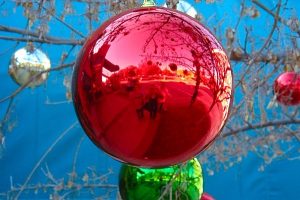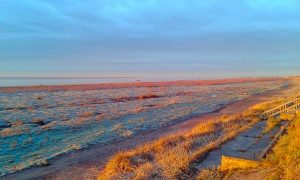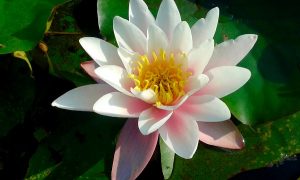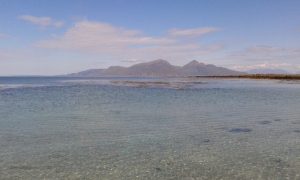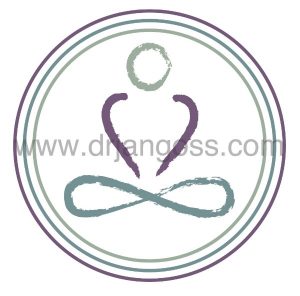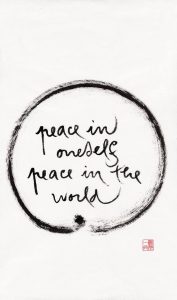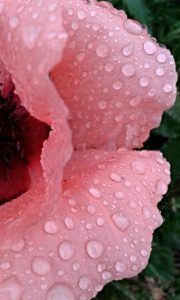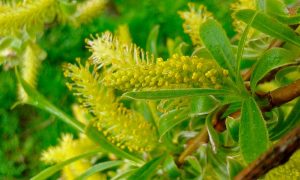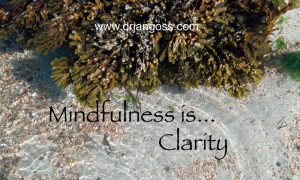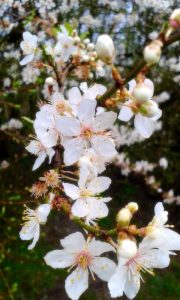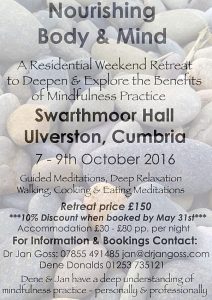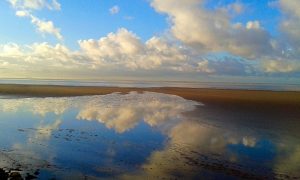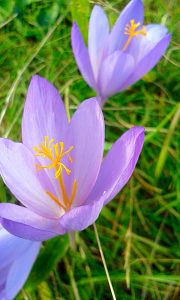Jan Goss
Giving ‘Presence’
Christmas time is synonymous with many different things: excitement; disappointment; love; sadness; giving; receiving; consumerism; spirituality; excess; parsimony; stress; relaxation…the list goes on and on. Each year we have so much expectation, and of course, sometimes it ‘lives up to’ and sometimes it ‘falls short of’ those largely commercially manufactured expectations, that we hold.
We all hear people saying ‘it’s just a day’, in an attempt to diffuse the enormity and weight of that expectation, whilst running around in an attempt to live up to the image of Christmas we have been conditioned to expect by the advertising agencies – I don’t think I have ever seen the normal dysfunction of family life playing out in a Christmas advert, have you?!
Mindfulness is in part, a large part, about realising that we have choice and learning to exercise or live that choice, in a conscious way. For example, we are awake and aware enough to realise that we are expected to be drawn in to the romantic notion we are sold, of an ‘all-consuming’ Christmas. We can willingly succumb, or we can consciously choose an alternative.
Of course, choosing and giving gifts is an absolute joy when we do it with mindfulness, really taking the time to make choices that are heartfelt and thoughtful, rather than feeling it is a ‘chore’ to tick off a long list! When we bring our true presence to the choosing and giving, everyone enjoys it.
Whether we choose not to buy gifts or not (yes we do have a choice!), we can choose to truly ‘be’ with the people we love and are choosing to be with, to give them our undivided attention for the time we are with them, rather than being dispersed and scattered, not really present at all. Giving our presence is truly a gift for our self too, because when we are present, we are engaged, happier and enjoy life more completely.
So, whatever your thoughts, feelings and beliefs are in this gloriously multi-cultural community that we constitute, make time and space for your self and those you love. Do your best to recharge and rejuvenate, and whether you are giving your presence, or presents (or both!), really immerse your self in, and savour EVERY moment.
Wishing you mindfulness, peace and love in each moment and I look forward to ‘being’ with you in 2017, if not before!
Jan x
Positive Expectation ‘vs’ Negative Bias
Apparently, as human beings we are programmed with a negative bias, we actually look for and focus on the negative aspects of our self, others and our experiences! That may seem like a ‘design’ fault but of course sensing ‘danger’ in its myriad forms helps to keep us safe, it protects us. The fact is that our brain is primed to sense danger, and our amygdala determines whether we enter ‘fight/flight/freeze’ mode, or whether we summon our resilience and face adversity with calmness and equanimity.
Whereas in the distant past, a confrontation with a sabre tooth tiger may have activated the amygdala (described as ‘a sort of panic button in the brain‘), now it is triggered by things like a deluge of emails, rushing and a feeling of ‘not enough hours in a day’, demanding colleagues or clients, feeling that we “should” be doing something more, or feelings of isolation and inadequacy – the latter often prompted by social media which can inaccurately portray everyone else having more fun than we are. All of this ‘fast-pace’ – inner and outer – can lead to feelings of anxiety and low mood, that easily become overwhelming. Certainly, this issue with social media has been cited as contributing to the increase in depression among young people.
So, we need to be mindful of what we ‘consume’ – not just our diet – the media we consume, the thoughts we think, and the conversations we engage in, all shape our propensity to see ‘good’ or ‘bad’ in our self and in the world, they shape our expectations and feed our fears – with mindfulness we can see this process in action and we can make choices that create a calm inner landscape and a positive momentum.
Because of our negative bias, we need to work on our capacity to generate positive expectation and the self-awareness that mindfulness gives us, enables us to create that change. If we start by simply ‘noticing’ our negative inner dialogue and noting the effect it has on our body, emotions and mood (without judging it, or our self), we will soon want to change our way of thinking, processing, and interacting with the world.
Gratitude is often the unsung hero of mindfulness practice. If we practice being grateful, we soon start noticing more things to be grateful for. We hone in on the positive and in doing that, we automatically let go of the negative. Keeping a daily ‘gratitude journal’, listing 5 things each day that we are grateful for, even (and especially) when life is challenging, brings great rewards and change. I use a specific journal for the purpose of writing down what I am grateful for at the end of each day and I invite you to do the same and see what happens.
I am grateful for….
I am grateful for….
I am grateful for….
I am grateful for….
I am grateful for….
It is important to repeat these words in every sentence you write, to embed your sense of gratitude.
Doing this consistently (each day) for a significant period of time (12 months is ideal) we soon begin to shift our focus from a negative bias, and as we begin to focus on all that is ‘good’ in life, all that we have to be grateful for, this creates an upward spiral that fosters positive expectation. The more we expect and trust that things will work out, the more we see we have to be grateful for.
You can start now – and send me your first list if you like, I’d like to read it. As someone who attended my Retreat Morning last Saturday said afterwards, ‘we don’t have to wait for the New year to make resolutions!’ Indeed, there is no time like the present…
Calmness, Clarity & Confidence
I am currently looking to update my website and so I have been reflecting on my ‘process and practice’ of working with clients ~ gaining greater clarity around exactly what I offer to the beautiful people that I have the privilege of working with.
Using mindfulness for personal ‘development’ or ‘evolution’ develops the following three ‘essential ingredients’ or outcomes: Calmness, Clarity and Confidence. These are results of engaging in mindfulness practice and they are also three essential ingredients for a happy and successful (however defined) life. The mindfulness ‘journey’ is a process that revolves around developing and deepening these qualities in our self ~ hopefully you will find this insight useful:
Calmness is the antidote to worry and anxiety and so it has a therapeutic effect on our physiology as well as our psychology. Mindfulness helps us to reduce stress and relax, to replace negative bias with positive expectation, and increase our emotional resilience, all of which contribute to our inner peace. Calmness is also the foundation required to find the spaciousness that enables clarity of mind and effective creative and analytical thinking ~ both of which lead to a deep inner confidence or trust in our self and our intuitive capacity.
Clarity is dependent on calmness. When our body is relaxed our mind is relaxed and vice versa. In the spaciousness that calmness brings, we enjoy greater focus and concentration and this, combined with our ability to be present, non-judgmental and aware that everything is impermanent, allows our perceptions to be clearer and more accurate. When we are more centred and balanced, we naturally have more trust and confidence in our self.
Confidence enables us to move though life with ease ~ at home and at work. When we have that deep inner confidence or trust in our self, we have a positive perception of our self and a positive expectation of life ~ we ‘faithfully’ go with the flow and good things happen, consistently. And so we have more to smile about!
It seems to me that people often come to me when they are either anxious, confused, or unsure of themselves in some way. Mindfulness works initially to develop the calmness that is essential for us to see with greater clarity and when we become clear, it boosts our confidence. Mindfulness and these 3 C’s are the springboard from which we develop the likes of creativity, intuition, authenticity, trust ~ and of course the health and wellbeing that these qualities of life contribute to.
The cycle is perpetual and the qualities develop simultaneously ~ and there is ALWAYS another level to get to. We are constantly responding to life and the changes that we are presented with ~ our personal evolution is inevitable and so it makes sense that consciously and voluntarily engaging with the process by developing greater mindfulness ensures that we are adaptable, flexible and flowing with life, rather than being ‘stuck’, or in a ‘battle’ with it. The ‘work’ of personal evolution is never ‘done’, it is ongoing for as long as we draw our precious in-breath and out-breath.
Happily, mindfulness provides us with a simple practice and a path that creates lasting change within us and around us. It is organic and dynamic and therefore endlessly facinating and engaging – it wakes us up to the wonders of life ~ including our self!
Connecting with Nature, Inside & Out
Taking time out to ‘be’ in Nature, to really connect with our inner and outer environment is essential for our health and wellbeing. There is something nurturing about being in the natural world, away from the hustle and bustle of ‘normal’ life, in taking time to slow down and reconnect with our self through the natural environment. It is so much easier to practice mindfulness with the support of Nature, to be mindful[ness], rather than do mindfulness. There is an effortlessness that comes from synchronising with the rhythm of the natural world, that enables us to be the practice, to connect with each action, each word, each thought that passes through us.
On the recent retreat I held on the beautiful Hebridean Isle of Muck, we did just that. We enjoyed the stillness that comes from creating space inside, through the space offered by the natural environment – and the support of a group of mindfully-intentioned people. We took time to create, to reflect and share, to look deeply into our selves and our connection with Nature. Nowhere I know, supports this precious process quite like this precious island.
The long drive to the port of Mallaig, through Glencoe, prepares us for the physical letting go of the mainland and then the two-hour ferry crossing ‘cements’ the feeling of release that ensures we can connect fully in the here and now, with our self, in each moment of our life. There is no distraction, only Nature.
During the retreat, we each engaged in journalling and shared our insights in the spirit of learning through deep practice. Through my own writing process I became increasingly aware of the relative ‘violence’ of some of my actions and the corresponding art and practice of non-violence. In the mindful space that we created, to snatch something like a tissue from a box, or to throw food into a bowl, seemed irreverent and ‘violent’, whereas to handle food with complete mindfulness felt like an act of non-violence, of love and appreciation. In my journal I wrote:
“I can feel a violence in everything I do. A pushing. A hurriedness. An almost imperceptible impatience to get from one thing to another. When it is present, I feel it in my body: putting my arms through my sleeves; writing fast; not taking my time; a lack of compassion for what I am doing; folding a blanket; chopping vegetables; washing up; cleaning my teeth; washing my precious body. In this place of violent action there is tension in my body, my hands ‘driving’ the action. It is only when I slow down enough, be still enough, be still inside, that I am fully aware of it.
The pen against the paper sounds loud and harsh and yet I have slowed right down [now]. Picking up, placing down, things and myself, has such a different feel when I slow down and when I am mindful: there is love in every action, every breath, every thought. Being loving in this way, creates a loving state of mind. Love replaces violence and ‘non-violence’.
Even holding tension in my body feels violent.
Rushing feels violent”
Everything is relative of course, and in the fast pace of non-retreat life, I am largely unaware of the feelings of violence within me. A favourite aphorism of mine is ‘awareness is the key to change’ and being on retreat I am aware of how to change, of what I need to do to deepen my practice. When we are aware of our actions, thoughts and words and the impact that they have on our self, ‘others’ and the Earth, then we are able to make different choices that support our self and therefore others and the Earth – because we realise in looking deeply that these three ‘constructs’ are not separate but totally interconnected. Non-violence in myself contributes to non-violence in the world. Caring for my self, is caring for the world. Being on retreat I am reminded of this as I am able to see things more clearly in the stillness within.
Costa, Coldplay & Bottle Tops
Results aside, there seems to have been a depressed air post referendum, like we are all caught in a thick, endless smog, that there is no escaping….or is it just me?! There seems to have been a feeling of hopelessness and helplessness, a feeling that is far from ‘Great’, pervading Britain. Personally, I have been feeling a bit like a dazed teenager awakening from the bubble of care-free childhood, asking my self (quite a lot) ‘what’s the point?’
Please bear with me….
As I neared home this morning after my walk along the estuary and through the woods I saw a young woman coming towards me, on her way into work, her hood was up in defence of the rain, cigarette in one hand and clutching an extra-large Costa cup in the other, neither seemed to be ‘doing it’ for her this morning, if indeed, they ever did. I swear her eyes were closed…she looked like she was sleep-walking and I couldn’t help seeing her as a metaphor for the world at large. We are all sleep-walking through life to some extent, distracting our self with whatever will hold our rapidly diminishing attention spans for a few fleeting moments. The irony of distracting our self from our self and how we really feel, is that we need more and more input to maintain the same level of distraction, to momentarily alleviate the fears and difficulties we feel, in simply being human.
The timing of Glastonbury was good, for millions of us it provided the perfect distraction (and antidote) to the news of Friday morning and the sense of division and discord that it brought with it – music has the power to bring people together, to unite us and bring us into a visceral ‘feeling’ state, to get us out of our heads and into our bodies (as mindfulness does). I didn’t see much of it, but I did see Coldplay. I am a recent convert – for years I just didn’t ‘get it’ and then I saw this interview with Zane Lowe, (I’ve just watched it again, all 1hr 9mins of it!), where Chris Martin lays his soul bare (about 3 minutes in), then I bought the emotive album Ghost Stories off the back of that, and now I am hooked. Whether you like their music or not (and I really didn’t), it is almost impossible to deny the sense of joy and dare I say euphoria that they brought to the 135,000 people in the rain and mud of Worthy Farm and the millions of us watching at home. I smiled for 90 mins in awe of their ability to unite so many people and embody and transmit so much love. They have an immense talent for uniting people – connecting them to themselves and connecting them to one another.
Watching the interview and seeing the concert, I feel inspired again. Chris Martin seems to have worked through a lot of personal ‘stuff’ and he shines from the inside, he embodies and exudes love. There is always treasure in life’s most difficult experiences if we can open our self to be vulnerable to them, to just sit with our difficult feelings and work to accept whatever arises. It isn’t easy, but then most worthwhile outcomes require patience and effort. The personal (aka ‘spiritual’) journey is by definition a lifetime’s work and our mindfulness practice is the key to building resilience and happiness.
It’s been two days since I wrote most of the above and in that time and process something has shifted in me. This morning whilst walking on the beach I picked up a seemingly innocuous lid from a fizzy drinks bottle. Initially I walked past it, as I often have with plastic bottle tops (especially in my apathy of the past week), but a few metres on I was prompted to make a u-turn. I realised it was important to pick that up too, as I do the bigger items of plastic that wash up on our shoreline. Tons of these small items of plastic are ending up inside marine life and birds and the bigger items play their part too as they break up into smaller pieces in our oceans – and then there are the microbeads found in toiletries, which wash directly into our water system. If you want to practice mindfulness, you may like to sign up to a ‘Plastic Free July’ – this is part of living a mindful life too, of becoming more conscious, more awake.
The bottle top reminded me that every thing I do or don’t do, however small, has an impact, and if we are all taking care of those small things, it has a big impact (just like voting, or not voting), we do have power individually and even more so, collectively. And so, I am encouraged to delve deeper into my meditation practice after a period of apathy. I am encouraged to generate peace within my self, because I know that will bring some peace, however finite or infinite, into the world. If we all do that, it will have a huge impact at this time when peace is required to quell the collective and individual fears…and bring more happiness.
Babies, Injunctions & Ordination!
Well, that is just a snapshot of the rich tapestry of my life over the past 10 days or so! Your challenges may have been different, but the resultant emotions will probably constitute a similar range to mine, with myriad thoughts, feelings and the associated emotions to juggle, manage and assimilate…
To elaborate: my lovely nephew and his gorgeous partner have just this morning brought a beautiful baby boy into the world; during the week I received a notice of Injunction from Eversheds solicitors who represent Cuadrilla – the company hellbent on drilling into the Earth and filling it with poisonous chemicals, in order to extract shale gas (does this make sense to anyone who doesn’t have a vested interest?!); and I received lay ordination in the Tiep Hien Zen tradition of mindfulness teacher Thich Nhat Hanh.
The idea of fracking does itself bring up a lot of challenging emotions in me – mostly anger and sadness. I care deeply for the Earth and much of my way of life is motivated by my deepest aspiration to live with reverence for the Earth on which we are ALL (including the individual people that constitute Cuadrilla!) dependent. With this thought I am reminded of the native American proverb that says:
“Only when the last tree has been cut down, the last fish caught, the last river poisoned, only then will we realise that one cannot eat money.”
My feelings about fracking were compounded by the letter I received on return from retreat, which is a High Court Injunction banning me from entering a greenfield site near to where I live, that is earmarked by Cuadrilla for shale gas extraction. Emma Thompson, the actor, along with her sister and an audience of committed Greenpeace campaigners filmed a ‘Frack-Free Bake-Off’ there and shared the video via social media. I ‘liked’ and ‘shared’ the Greenpeace video (as I often do) on Facebook. This is my only connection to the ‘event’, but in the letter it is claimed that I was present “a fact which there is ample evidence to demonstrate”, and this constitutes a ‘contempt of court’!
There are many ramifications of this misidentification which are alarming of course, including the wider implications of a corporation attempting to silence people who wish to voice their environmental concerns. That is one of the reasons for me writing about it here, to highlight these issues, and also to remind you and me, of the significance of our mindfulness practice and the power it has to enable us to assimilate and calm our more vociferous and challenging emotions.
Last month I mentioned working with the mindfulness trainings as part of my on-going commitment to my personal mindfulness practice. This month I happen to be working specifically with the 6th training – ‘Taking Care of Anger’ which seems appropriate! So I have been reading, reflecting, and meditating, doing my best to create the ‘understanding and compassion’ that will enable me to quell the anger I feel….the anger feels less intense, but I know I still have more work to do. The wonderful energy of the recent retreat and the ordination ceremony have certainly helped me through this process. Being with over 200 people, monastics and lay practitioners, all practising mindfulness for a week has recharged my batteries and filled me with an inner sense of confidence and certainty.
The energy generated on retreat doesn’t stay on retreat of course – it comes back with each participant for us to share and spread throughout our various communities. We have been talking a lot about this ‘transference of energy’ recently in the weekly meditation groups that I hold. Naturally, this ‘transference’ takes place in any exchange we have. By practising mindfulness we are effectively building up a store or ‘piggy bank’ (as one of the nuns on retreat described it) of mindfulness, and each time we meditate we make a deposit, and each time we go on retreat we deposit a ‘lump sum’ – it all contributes to the whole. In simple terms: the monastics bring their ultra-calm energy, generated by a deep and intensive practice to the retreat and share that with me; I bring the solidity of my personal practice to benefit those I guide; and they in turn take their mindful energy out into the world; it is the ripple effect in action.
Untying the Knots
Mindfulness teacher Thich Nhat Hanh, explains that mindfulness gives the understanding we need to untie the ‘knots’ that have formed within us through the course of our everyday life. Every encounter, every word, everything we witness, has the potential to form or release inner tensions. He says:
When someone says something unkind to us for example, if we do not understand why he has said it and we become irritated, a ‘knot’ will be tied in us… If we practice mindfulness, we can learn the skill of recognising a knot the moment it is tied in us, and find ways to untie it. These knots need our full attention as soon as they form, while they are still loosely tied, so that the work of untying them will be easy (Thich Nhat Hanh, 2011, Your True Home).
Practising mindfulness gives us a skills set that enables us to do the work of untying our inner knots and more importantly, as stated above, to notice when they are being tied, so that we can prevent them forming in the first instance!
We often talk about being tied in knots when we are confused and anxious. I find it a really helpful analogy that highlights the tightness that usually occurs in the body when we become ‘stressed’. The stress response sees the muscles contract or tighten, affecting our breathing, blood pressure and our heart rate. When we are in this state, each cell in our body contracts and is unable to function efficiently, and this is quite often the cue for a physical illness, as our immune system becomes less efficient under duress. Somewhat paradoxically, the stress response highlights the importance of being relaxed, not simply for our mental and emotional wellbeing, but also for our physical health.
A greater sense of inner peace, achieved through mindfulness practice, has been shown to strengthen our immune system. Naturally, this makes sense, we know that mind and body are intertwined, not separate – working with (or neglecting, or abusing) one aspect of our self impacts on the other. This is something I love about mindfulness – it is a truly holistic practice. So, I know that as I practice the meditation technique I am simultaneously caring for my physical body, my psychological health and my emotional wellbeing. Knowing this, helps me to make the time to practice.
Note to Self: Avoid Knot-Tying Behaviours!
Last week I watched a film called The Divide, a candid and emotive documentary account of seven people’s lives (American and British) – that lays bare their ‘knots’. I have also been reading Chavs: The Demonization of the Working Class by Owen Jones…
Both the book and the film are well documented and heart-felt, but I could feel knots forming in me, as I watched and read. I avoid newspapers and the TV for this very reason – I know that the drip, drip effect has detrimental consequences and that the reporting is often constructed to create fear, intolerance and anger in the recipient, and I choose not to water those painful emotional ‘seeds’ within myself.
Thankfully, I am also studying the Fourteen Mindfulness Trainings as part of my lay ordination, which is scheduled for the 30th May! This month I am working with the fifth training on ‘Compassionate, Healthy Living’ which guides us to be mindful of what we are inputting, and to ‘consume in a way that preserves compassion, wellbeing, and joy in our bodies and consciousness and in the collective body and consciousness of our families, our society, and the earth.’
Reading this training, I am reminded that neither the book or the film are fulfilling these criteria!
So I have picked up my copy of Peace of Mind which I know will ‘water the seeds’ of peace, joy and love in me, and that ‘watering’, combined with my daily meditation practice will help to loosen and untie some more of my knots!
As I go about my daily life I shall continue to ask my self the question: ‘Which seeds am I watering in this moment?’
And so, this is an invitation for you to ask your self that question too…
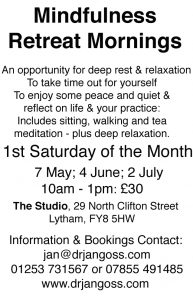
Calmness and Clarity
When we are calm inside, we have greater clarity of thought, our reasoning and analytical skills are sharper and we are more focused and trusting of our self and our intuitive capability. All of this leads to greater confidence and esteem, and from this place life flows with ease and joy. In short, the outer world mirrors our inner world – so it is really important to pay attention to, and work with, what is going on inside!
This inner ‘confidence’ or strength, and the stability it fosters, all stem from the ability to create a sense of calm inside. When we relinquish our fears everything falls in place, and when we have that level of trust, each moment of life is a pleasure. The result being, whether we are engaged in potentially ‘mundane’ tasks such as washing the dishes or having a shower, we are truly alive, truly enjoying the present moment. If we can train our self to be fully present in this way we don’t need to seek pleasure in some imagined future because we experience the joy of this moment.
Culturally, we don’t really seem to value a state of deep relaxation – generally speaking it is not seen as a mark of ‘success’. Ruby Wax points out in her first mindfulness book Sane New World that we are mostly preoccupied with deifying ‘busyness’, this ‘doing’ mode gives us the sense of significance we all seek, but it is dependent on external conditions. In contrast, the ‘being’ mode brings us back to our self and that is not always a comfortable place – especially if we are in the habit of judging our self harshly. Mindfulness enables us to ‘be’ with greater ease as we train our self to be less judgmental, to be kinder and more accepting of who we are, and even embrace who we are, when all of the external factors that we associate with our constructed identity, are stripped away.
When we learn to truly relax, to create the Relaxation Response in our body, calmness and clarity ensue. This is the basis of ‘peak performance’ whether that is in business, sport, spirituality, creativity, or just enjoying our life more fully. The peace we learn to create inside is the springboard for ‘leading’ a fulfilling and meaningful life.
We are all engaged in ‘self-leadership’ in each moment whether we are mindful of it or not and with greater mindfulness we can make this process a conscious one. When we realise that this mindful self leadership is the basis of all leadership, as well as our experience of life, we understand the importance of focusing on our formal mindfulness practice, on working with our self from the inside out. The quality of our life reflects the quality of our ‘mind’, and calmness leads to clarity, so to succeed in any area of life we need to prioritise establishing a calmness inside.
Naturally, we can support and promote our sense of inner calm and clarity in many ways. Maintaining a daily meditation practice is absolutely fundamental to this. Being mindful of what we ‘consume’ and making choices that support our practice are also the building blocks of calm. If we want to build on the good work of regular meditation, we need to be aware that we consume in may ways. Food and drink is perhaps the most obvious, however we also need to be aware that we consume with all of our senses. Everything we come into contact with leaves an impression on us: news; music; reading; conversations; relationships; the internet…you get the picture, the list is endless. So if we are mindful of what we are inputting, and cut out or cut down on the potential sources of fear and intolerance, we will naturally become less fearful and more tolerant. We need to fill our psyche with words, images, thoughts and people who en-courage, rather than dis-courage us.
I have ventured into the realms of ‘high-performance coaching’ and one of the questions that we use is ‘will it make the boat go faster?’ (based on a book of the same name). In other words, whatever we are engaging in from moment-to-moment, will it take us closer to where we want to be?
Now I’m off on retreat…as I know that will take me closer to where I aspire to be (i.e. more present!)
Wishing you a mindful weekend!
Leonardo DiCaprio, Novak Djokovic & Perceptions
I’m feeling inspired by these two!
I have just watched DiCaprio’s Oscar acceptance speech and wonder if his ‘political’ (aka humanitarian) leanings have prevented him winning an Oscar sooner. I’m sure his courage to choose the words he did will have ruffled some feathers here and there. I googled the speech and was interested to note the different perspectives of those who reported it – it was described as ‘cringe-worthy’ by one of the sources. Certainly some of the audience seemed slightly bemused, whilst others cheered in support.
I am reading a book by Thich Nhat Hanh called Understanding Our Mind, in preparation for a 5-day retreat I am attending in a few weeks time. In it he talks a lot about perceptions, which of course formulate the basis of how we make sense of events, our self, and others. Our conditioning from an early age is a great influence on how we approach and live our life, and in order to find greater peace of mind, it is often necessary to increase our understanding of how the past influences the present and how the present influences the future. Nothing happens in isolation, ‘randomly’, there is always a chain of cause and effect. With awareness we can track the thoughts and actions that have brought us to this particular moment. With this mindful awareness life then ceases to be as ‘mysterious’ as we sometimes perceive it to be. We can see clearly that ‘this led to that’. Nhat Hanh states:
In Buddhism, action (karma) takes three forms: actions of body, speech, and mind. When our actions of body, speech, and mind are brought together, they create the qualities of our happiness or suffering. We are the author of our destiny. The quality of our being depends upon the quality of our prior actions (p.181, my emphasis).
Mindfulness enables us to develop the habit of looking without judgment at what has gone before, to be less dogmatic and more open minded. When we are able to approach life with openness and acceptance we find that our view becomes more objective and reasoned, and we enjoy greater peace of mind. We are able to see the bigger picture and integrate all of the learning we have had along the way – if we are able to let go of our judgments about it – therefore, no experience is ‘wasted’, everything provides us with the opportunity to learn and grow and ‘author our destiny’.
DiCaprio is authoring the destiny of millions through the work of his Foundation LDF, founded in 1998. In the past few years he has donated $30 million to tackling a wide range of global humanitarian and ecological causes (listed here) and he has the courage to speak out on these issues, to change perceptions, whenever he has the opportunity.
So what does this have to do with mindfulness, with us? I figure, with this information we can choose to be overwhelmed – or we can choose to be inspired to act. We may not have millions to offer, but we all have the capacity to contribute in even the smallest of ways: not buying more ‘stuff’; reducing the amount of packaging (especially plastic) we ‘buy’; recycling; sourcing ethical manufacturers, banks, and suppliers (including energy and phone/broadband suppliers); buying organic; or even just picking up litter! We can all contribute something positive to our collective destiny.
Being Courageous
I witness a great deal of courage on a daily basis in clients who are learning to ‘be’ with adversity: who work to re-frame and integrate the challenges that life inevitably presents; people who are learning to live with physical pain; psychological and emotional challenges that lead to anxiety and/or depression; those facing bereavement and the ending of relationships; people retiring, losing, or changing jobs; people who have decided to ‘follow their dreams’; and people who ‘simply’ seek to understand themselves better to lead a happier, healthier and more engaged life.
I feel so blessed and inspired to work with such courageous people and do the variety of work I do whether: working with small intimate groups to share personal understanding and experience of the practice; working one-to-one in great depth; or helping to generate the deep, healing peace that is transmitted on a retreat. Above all, it is a great privilege to be a part of someone’s journey of awakening.
It takes time, patience, determination and courage to embark on the inner journey to face and come to terms with the way things are ‘right now’ – and unfortunately it usually takes an inordinate amount of pain (physical, emotional and/or psychological) to get us started. However, once we have begun learning and practising the ‘art of mindfulness’ – the formal meditation and its application in our daily lives – we often start to experience beneficial change within a relatively short space of time.
Sometimes this en-courages us to keep going with our formal practice and sometimes we let the practice slip because there has been a significant shift in how we feel! Somewhat paradoxically, when we start to feel ‘better’ the result may be that the motivation to practice wanes. The ‘secret’ to sustainable change is to practice even when we feel good!
The practice is repetitive and there is great value in that. It is through repetition that the skills become embedded in the neural pathways of the brain. This is how we modify the form and the function of the brain. As with any skill, we need to ‘clock up’ the hours for a transient ‘state’ of mind to become embedded as a more enduring ‘trait’. We may have spent years worrying and embedding that behaviour, practising mindfulness serves as an ‘antidote’, to reverse the habit of worrying.
As those of us who practice know, mindfulness is simple but not necessarily easy. It takes time and commitment and often requires some lifestyle change to make space for it, and get the most benefit from it. Also, there are many misperceptions of what it is and isn’t, and again it takes time to gain a deeper understanding of its complexities – and there is no ‘fast track’ to this understanding.

